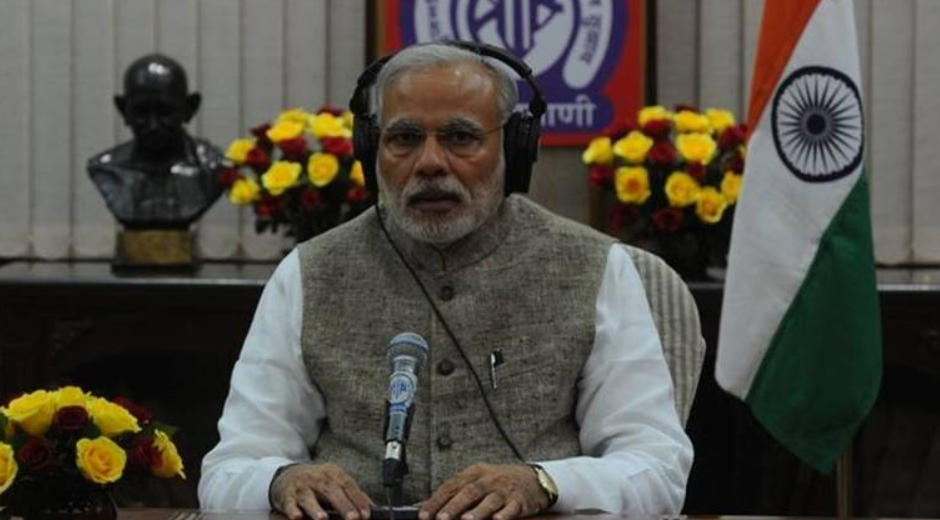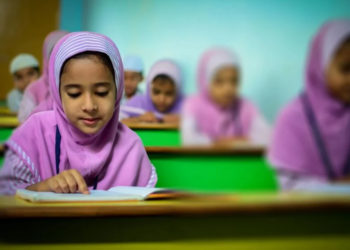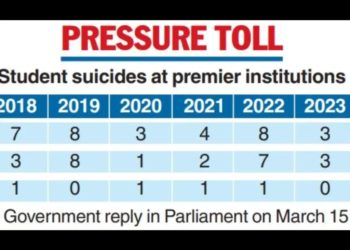
Prime Minister Narendra Modi’s monthly radio broadcast ‘Mann Ki Baat’ turned out to be a flop show in the past five years, reveals the pan-India data provided under the Right to Information Act (RTI), 2005.
In response to RTI queries filed by Delhi-based activist Yusuf Naqi, who had sought listenership data of the Prime Minister’s monthly address to the nation, All India Radio (AIR) said the average of all-India average listenership of the programme in Hindi and regional languages in rural as well as urban India continuously witnessed a decline.
The 20-minute programme was made available in regional dialects, starting with Chhattisgarh, Haryana and Jharkhand, from June 2, 2017. The aim was to expand the reach of the programme as far as possible. But the idea – say the numbers – fell flat.
The listenership, which was recorded at 30.82% in 2015, came down to 25.82% the next year (2016). The figure further witnessed a dip at 22.67% in 2017.
Among cities, the Hindi broadcast of the Prime Minister’s radio address witnessed maximum listenership in rural and urban Patna, while there were no takers of the programme in rural Thiruvananthapuram.
The public radio service provider did not give any absolute number, yet the figures in percentage (see attached RTI reply by AIR) show that the programme miserably failed to draw audiences in several places, such as Ahmedabad (Gujarat), Nagpur (Maharashtra), Jaipur (Rajasthan), Rohtak (Haryana), Shimla (Himachal Pradesh), Bhopal (Madhya Pradesh) and Jammu (Jammu and Kashmir) – all states where the Bharatiya Janata Party (BJP) was ruling at that time.
RTI Response From AIR by Newsclick on Scribd
An analysis of month-wise average data of listenership shows that the Prime Minister’s much-puffed up radio broadcast could draw only 20-30% of radio/FM audiences across the country.
In fact, the numbers could not even touch two digits in several places in the country.
The standalone figures show that listenership of the Hindi and regional language broadcast was recorded somewhere between 0.0% to a maximum of 25% of the radio/FM audiences across the nation.
Prime Minister Modi on February 25 suspended his monthly broadcast for March and April, saying that he would be back with the programme on the last Sunday of May, by when results of the Lok Sabha elections would be declared.
Having officially started on and from October 3, 2014, Mann Ki Baat aimed to deliver the Prime Minister’s voice to the general masses of India, ranging from topics such as cashless India, digital payments, goods and services tax, exams, toilets among others.
Since television connection is still not available everywhere in India, especially in the isolated, rural and less developed regions, radio was chosen to be the medium for the programme, owing to its wider reach. An estimated 90% of India’s population is reachable over the medium. As on 2017, AIR is said to be one of the largest radio networks with 422 stations across the country. Additionally, various private FM radio stations in the metropolitan cities of India were allowed to broadcast a recording of the show.
But the target for Mann ki Baat fell far short and could not even cross 50% of the radio audience base.
Initially, as the numbers suggests, the programme was well received by the target audience, especially the urban masses residing in metropolitan cities across the country, but later it appears to have lost sheen and the number went down to 10% to 20% and 25%. In some cases, it plunged to 0.0%.
In November 2014, the all India average of the programme's listening in urban as well as rural pockets was recorded by the AIR at 29%, which slightly went down to 28.5% in December.
The next year, the programme performed slightly by drawing 31.9% audience from rural as well as urban India. From February to December, the percentage of combined audiences from rural and urban belts stood at 30.5%, 31.8%, 28.5%, 30.4%, 31.9%, 32%, 32.5%, 33.2%, 30.9%, 27.9% and 28.4%, respectively, showing and eventual decline.
In 2016, too, there was a steady decline in listenership across the country . The combined (urban and rural) average audience stood at 30.3% in January, 29.3% in February, 27.7% in March, 29.4% in April, 27.8% in May, 28.2% in June, 24.5% in July, 27.6% in August, 29.4% in September, 23.8% in October, 27.5% in November and 17.9% in December.
In 2017, the percentage of national average of the listenership of the radio address in rural as well as urban belts stood at 27.9% in January, 27.5% in February, 24.8% in March, 28.8% in April, 27.9% in May, 26.6% in June, 29.4% in July, 29.1% in August, 27.9% in September, 25.6% in October, 27.8% in November and 25.5% in December.
The programme drew 27.5% rural as well as urban audience in January this year, 29.6% in February, 28.8% in March and 30.8% in April.
Expenditure incurred? No idea…
The RTI reply refused to divulge details of the funds invested on the programme. It also did not disclose the income that the radio service earned from commercials during the programme.
But unofficial figures reveal that the ‘Mann ki Baat’ became a major source of revenue for the All India Radio. The usual ad slots on AIR sold for Rs 500 – Rs1,500 per 10 seconds, but a 10-second ad slot for the PM’s radio address cost Rs 2 lakh.




